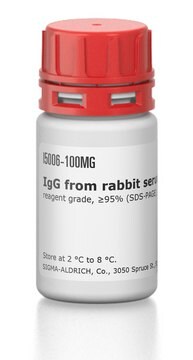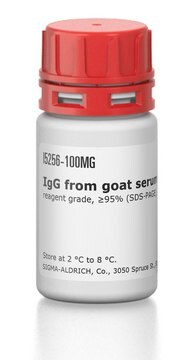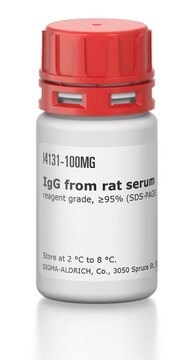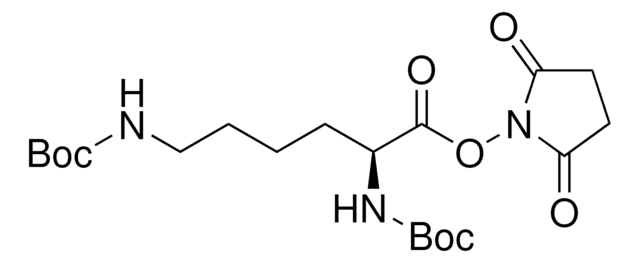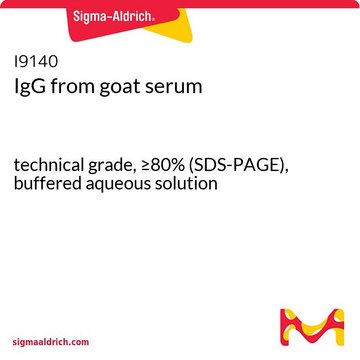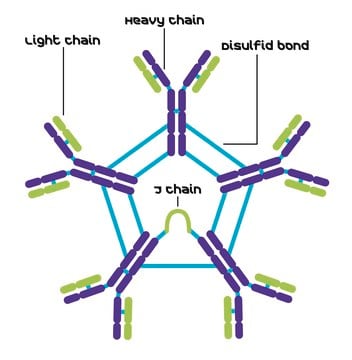I5131
IgG from sheep serum
reagent grade, ≥95% (SDS-PAGE), essentially salt-free, lyophilized powder
Synonym(s):
Sheep IgG
Sign Into View Organizational & Contract Pricing
All Photos(2)
About This Item
Recommended Products
biological source
sheep
Quality Level
conjugate
unconjugated
antibody form
purified immunoglobulin
grade
reagent grade
Assay
≥95% (SDS-PAGE)
form
essentially salt-free, lyophilized powder
isotype
IgG
solubility
saline: 1 mg/mL at -20 °C (Repeated freezing and thawing is not recommended.)
storage temp.
2-8°C
Looking for similar products? Visit Product Comparison Guide
General description
IgG consists of four isotypes IgG1, IgG2, IgG3 and IgG4. It contains four polypeptide chains, made of two identical 50 kDa γ heavy (H) chains and two identical 25 kDa κ or λ light (L) chains, which are connected by inter-chain disulfide bonds.
Application
Purified IgG may be used as a reference antigen, standard, blocking agent or coating protein in a variety of immunoassays including ELISA, dot immunobinding, Western immunoblotting, immunodiffusion, immunoprecipitation and immunoelectrophoresis. Other applications include starting materials for the preparation of immunogens and solid-phase immunoadsorbents.
Biochem/physiol Actions
IgG antibody subtype is the most abundant of serum immunoglobulins of the immune system. It is secreted by B cells and is found in blood and extracellular fluids and provides protection from infections caused by bacteria, fungi and viruses. Maternal IgG is transferred to fetus through the placenta that is vital for immune defense of the neonate against infections.
IgG mediates transplacental transport and participates in the secondary immune response. IgG activates the classical pathway of the complement system. It neutralizes virus particles and toxins. IgG plays a key role in antibody dependent cell-mediated cytotoxicity (ADCC) and phagocytosis. It might be linked to allergy. It has the longest serum half life.
Analysis Note
Protein concentration should be determined after reconstitution by absorbance at 280 nm (E1%/280 = 14).
Disclaimer
Unless otherwise stated in our catalog or other company documentation accompanying the product(s), our products are intended for research use only and are not to be used for any other purpose, which includes but is not limited to, unauthorized commercial uses, in vitro diagnostic uses, ex vivo or in vivo therapeutic uses or any type of consumption or application to humans or animals.
Storage Class Code
11 - Combustible Solids
WGK
WGK 3
Flash Point(F)
Not applicable
Flash Point(C)
Not applicable
Personal Protective Equipment
dust mask type N95 (US), Eyeshields, Gloves
Choose from one of the most recent versions:
Already Own This Product?
Find documentation for the products that you have recently purchased in the Document Library.
Customers Also Viewed
Deepmala Karmakar et al.
Carcinogenesis, 41(12), 1767-1780 (2020-05-10)
Previously, our laboratory demonstrated that a deregulated E2F5/p38/SMAD3 axis was associated with uncontrolled cellular proliferation in prostate cancer (PCa). Here, we investigate the role of E2F5 in PCa in further details. RNAi-mediated E2F5 knockdown and pathway-focused gene expression profiling in
Agnieszka Gambus et al.
Cell cycle (Georgetown, Tex.), 12(8), 1225-1232 (2013-03-23)
Hexameric complexes of the six related Mcm2-7 proteins form the core of the replicative helicase. Two other proteins, Mcm8 and Mcm9, with significant homology to Mcm2-7 were first shown to play distinct roles during DNA replication in Xenopus laevis egg
S J Peacock et al.
Microbiology (Reading, England), 145 ( Pt 12), 3477-3486 (2000-01-08)
Adhesion of Staphylococcus aureus to human endothelial cells is implicated in the pathogenesis of invasive staphylococcal disease. The adhesion to endothelial cells of isogenic mutants defective in defined surface structures was studied. Three strains of S. aureus defective in fibronectin-binding
Anil K Pal et al.
Biosensors, 10(10) (2020-09-30)
We report a novel self-referenced diffraction-based leaky waveguide (LW) comprising a thin (~2 µm) film of a photofunctionalisable hydrogel created by covalent attachment of a biotinylated photocleavable linker to chitosan. Streptavidin attached to the chitosan via the photocleavable linker was
M F Saja et al.
Clinical and experimental immunology, 192(3), 337-347 (2018-02-07)
Hyperlipidaemia accompanies chronic renal disease either as a consequence of the renal dysfunction or as part of generalized metabolic derangements. Under both situations, the lipid profile is characterized by accumulation of triglyceride-rich lipoproteins (TGRLs). This lipid profile is recognized as
Our team of scientists has experience in all areas of research including Life Science, Material Science, Chemical Synthesis, Chromatography, Analytical and many others.
Contact Technical Service


